Curious Questions: Will the real Welsh daffodil please stand up
For generations, patriotic Welshmen and women have pinned a daffodil to their lapels to celebrate St David’s Day, says David Jones, but most are unaware that there is a separate species unique to the country.


It is springtime and roadsides, fields and gardens are spectacularly carpeted in solid yellow drifts of golden daffodils. It is particularly so in Wales, where the bloom is the nation’s emblematic flower.
For generations, Welshmen and women all over the world have proudly sported the flower in their lapel to celebrate St David’s Day on 1st March. Yet for all their patriotic pride in the daffodil, most will be unaware that there is, in fact, a separate species of the flower, unique to Wales, which can lay claim to the title of the real Welsh daffodil.
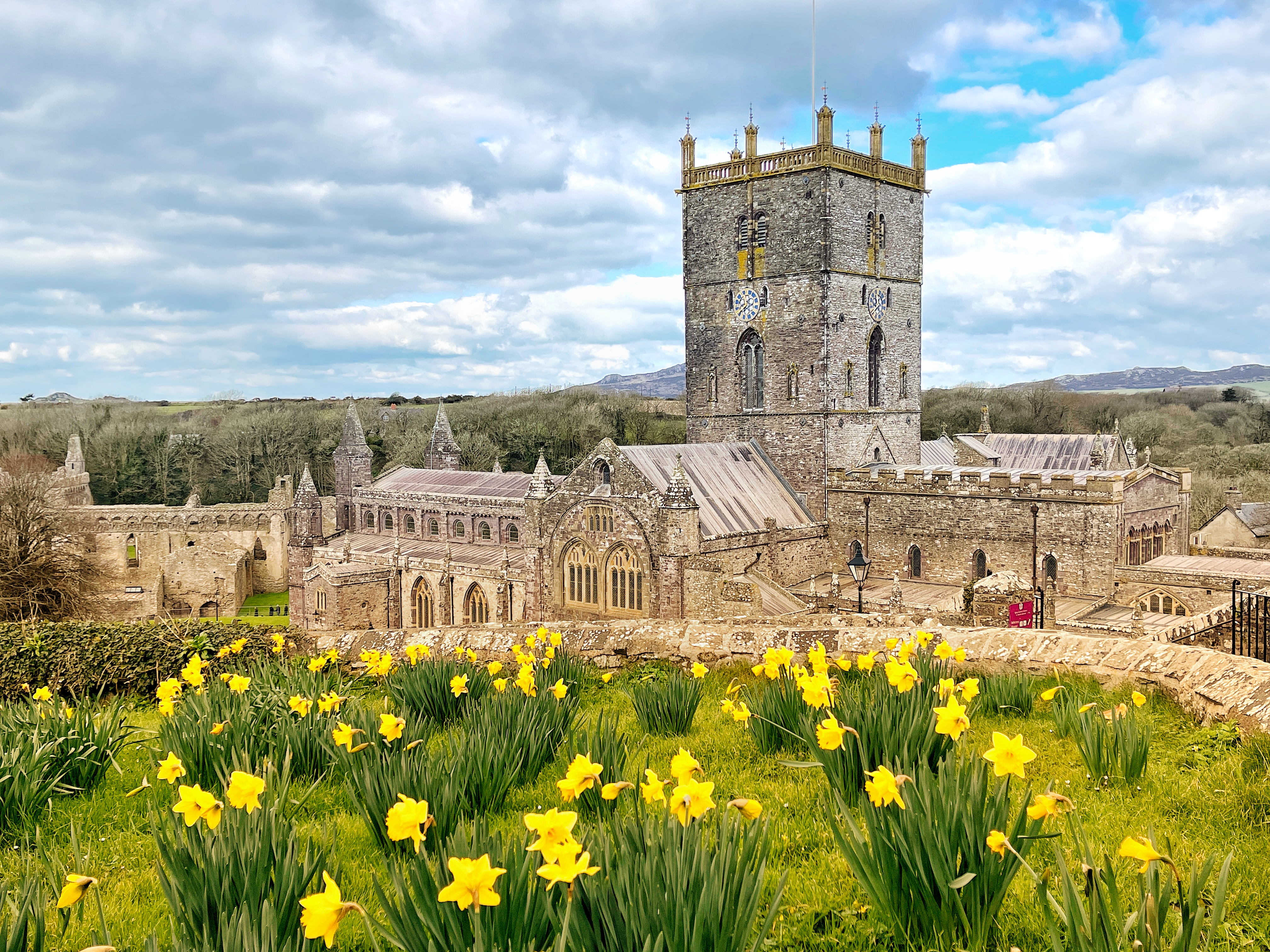
Daffodils in flower in March in front of St David’s Cathedral in west Wales
The Tenby daffodil (Narcissus obvallaris) is a distinct dwarf, early-flowering member of the narcissus family. It has a medium, smooth-textured and uniformly brilliant-yellow flower. Its beauty has long been recognised — indeed, E. A. Bowles, once reputed to be the foremost daffodil expert, declared it to be ‘the most perfect in proportion and texture of any deep yellow trumpet, and for close-up observation unlikely to be improved upon’.
A flower of some mystery, the exact origins of the Tenby daffodil are uncertain. Down the years, scientific theory and colourful legend have vied with each other to account for the flower’s inexplicable appearance and limited range within west Wales. The least likely, but perhaps the most charming explanation, dates back to the time of the Phoenicians. It tells how a ship from the fleet of the ancient seafaring race following a regular trade route was blown off course and sought shelter at Saundersfoot in Pembrokeshire. There, the Phoenician captain was intrigued to see natives cooking over fires fuelled by anthracite coal. Realising the potential of the fossil fuel, he returned the following year to barter a cargo of daffodil bulbs for it.
Another tale relates that the flower was introduced into Wales by a colony of Flemings settling in west Wales in about 1106. Certainly, following an inundation of Flanders, large numbers of Flemings did arrive in England in the 12th century — and eventually settled in Pembrokeshire. According to Welsh chronicler Giraldus Cambrensis, they had ‘been sent by Henry I king of the English, to colonise the district’. The theory that the daffodil could have been introduced by these exiles found favour in some quarters, possibly because the land from which they hailed was famous for cultivated bulbs. It is, however, somewhat inconceivable that those forced to take flight from their homeland would have considered daffodil bulbs essential items for enforced settlement in a foreign land.
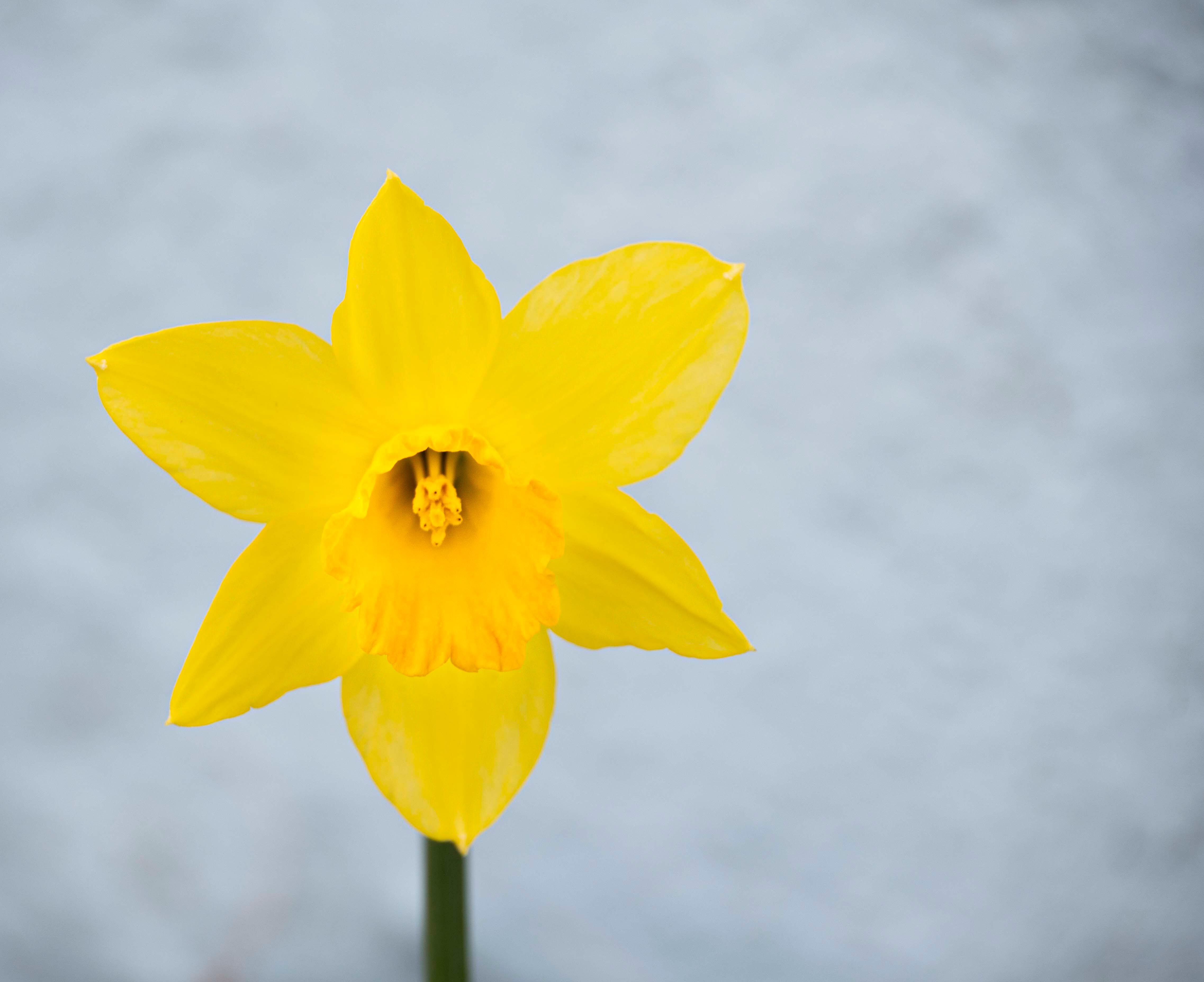
What seems an altogether more plausible explanation tells that the introduction of the flower was at the hands of medieval French or Italian monks. Many religious houses were indeed founded in Pembrokeshire and it is possible the monks brought the plant with them, for both ornamental and herbalist purposes. Yet such a theory does not provide a solution to the problem, for there has been no record of Tenby daffodil colonies occurring in France or Italy — or anywhere else, for that matter.
A further, altogether less romantic, theory may provide the answer to the origin of the flower. This suggests that it is a descendant of a variety introduced into the area that accidentally hybridised, flourished in local soil and weather conditions and eventually became the dominant species. Even this theory, however, doesn’t provide a totally satisfactory answer and perhaps the true origins of the bloom will forever remain shrouded by the mists of time.
Exquisite houses, the beauty of Nature, and how to get the most from your life, straight to your inbox.
The first mention of the flower appears to have been made by botanist R. A. Salisbury in his Prodromus stirpium in horto ad Chapel Allerton vigentium of 1796 and it was he who named it Narcissus obvallaris. What he meant by the ‘obvallaris’ is unclear, but Welsh botanist T. B. Rhys believed it was derived from a Latin word, ‘which means “well protected”, and which therefore describes how the essential organs of the flower are protected by its handsome and sturdy crown’.
There has also been some confusion about the native range of the Tenby daffodil. Certainly, its stronghold has traditionally been recognised as fields in and around Tenby. However, it has also been recorded in Carmarthenshire and at isolated sites in Shropshire, the Isle of Wight and Gorey in Co Wexford, Ireland. Indeed, the origin of the popular name ‘Tenby daffodil’ has been the subject of much speculation.
According to one theory, it was the name commonly used by Covent Garden porters, but it seems most likely that it was first coined by a Tenby nurseryman by the name of Shaw, who sold huge quantities to bulb wholesalers in London. Up to the beginning of the 19th century, Tenby daffodils were witnessed in profusion in the fields around the seaside town from which it took its name, but the increasing horticultural trade of the time saw truck-loads of the bulbs lifted and transported to London, to be sold at Covent Garden. One account reports that Shaw ‘was enabled to engage a staff of collectors who scoured the greater part of South Pembrokeshire for several seasons in a vigorous attempt to meet the phenomenal demand’.
Commenting on the eventual plight of the special daffodil, Rhys wrote: ‘As a rule, the farmers on whose land they grew regarded them as little better than weeds and readily parted with them for a trifle and sometimes for nothing.’ Meanwhile, Shaw did a roaring trade in the bulbs and his men ‘as a result of three days excursion, often brought him a heaped cart load, which he sold for £160 or more. So well did he keep his secret that he had a complete monopoly of the trade until the supply was practically exhausted’.
Indeed, the plundering became so great that, by the turn of the century, few wild specimens remained. For almost a century after this predation, the flower settled into comparative anonymity, so that even residents of the west Wales town from which it took its name were unaware of its existence. It was in the early 1970s that a teenage boy, who was on holiday in Tenby, asked at the local tourist information office where he could buy some Tenby daffodil bulbs to take home to his aunt in England. Local tourism director John Evans, believing he was the victim of a prank, laughed it off, but when he discovered that the town did indeed have a species of daffodil named after it, he featured it in local celebrations and interest in the flower was revived.
Today, the Tenby daffodil is regarded as all but extinct in the wild. It does, however, continue to survive as a cultivated bloom and can be seen on roadsides and embankments of its native west Wales. At springtime, it can be found in village hedgebanks between Meidrim and Narberth, near houses and churchyards that border the A478 Cardigan to Aberaeron, on approach roads and at Castle Hill in Tenby. The bulb of the true Welsh daffodil is also now commonly available from horticultural suppliers and has become increasingly popular with gardeners in recent years.
Country Life is unlike any other magazine: the only glossy weekly on the newsstand and the only magazine that has been guest-edited by His Majesty The King not once, but twice. It is a celebration of modern rural life and all its diverse joys and pleasures — that was first published in Queen Victoria's Diamond Jubilee year. Our eclectic mixture of witty and informative content — from the most up-to-date property news and commentary and a coveted glimpse inside some of the UK's best houses and gardens, to gardening, the arts and interior design, written by experts in their field — still cannot be found in print or online, anywhere else.
-
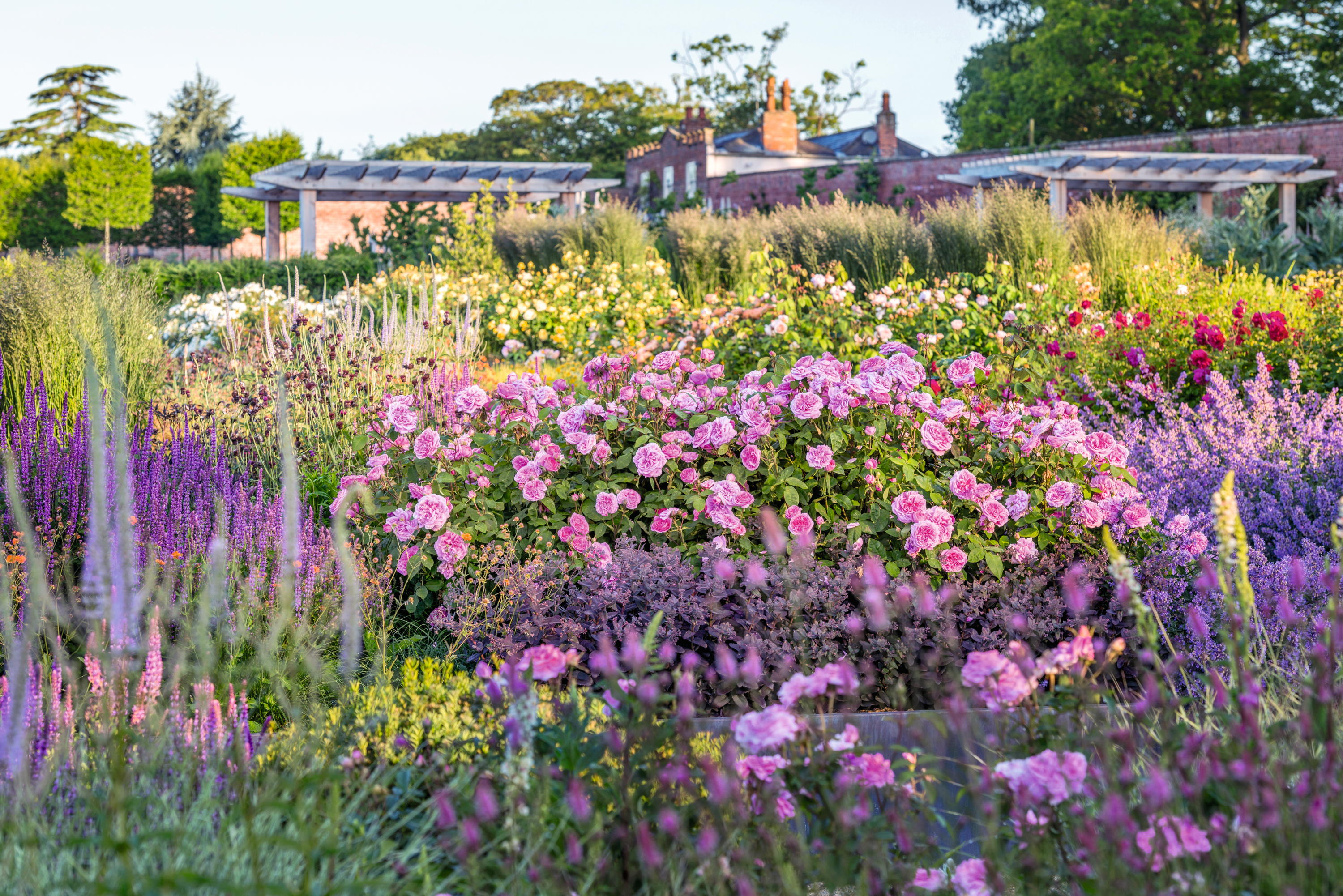 How Harper Beckham created the perfect gardener's birthday present for her father's 50th — with a little help from David Austin Roses
How Harper Beckham created the perfect gardener's birthday present for her father's 50th — with a little help from David Austin RosesWhen Harper Beckham wanted to commission a rose for her father’s birthday, there was only one man for the job, says Charles Quest-Ritson, as he takes a closer look at the science behind creating a new David Austin bloom.
-
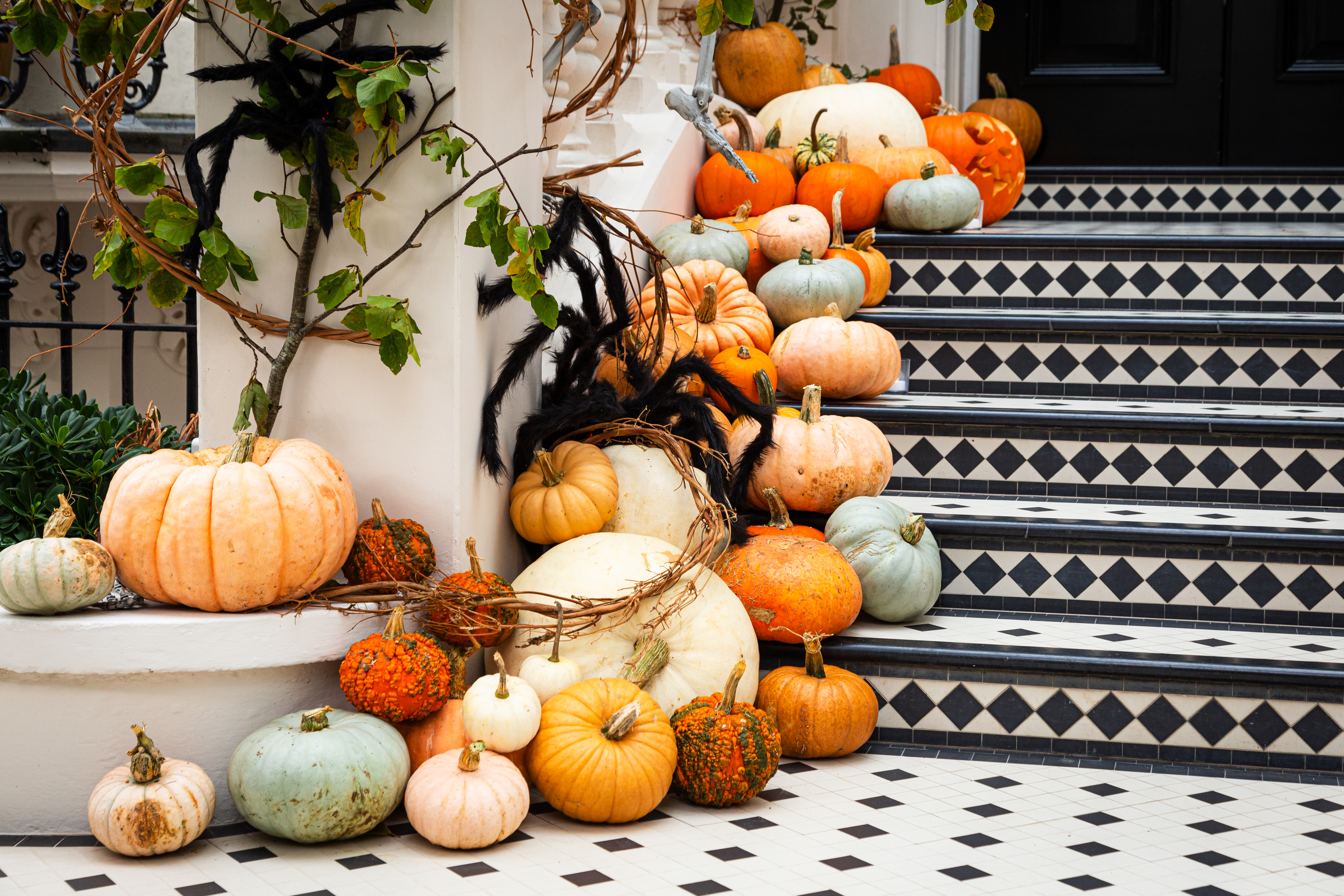 Oh, my gourd, it’s Hallowe’en: How best to decorate your home with pumpkins, squashes and more
Oh, my gourd, it’s Hallowe’en: How best to decorate your home with pumpkins, squashes and moreAs the feast of All Hallow’s Eve approaches, Debora Robertson advises how best to decorate your home with autumn's edible bounty.
-
 'It makes me feel as if I’ve done a good job as a father and that I did the right thing in wanting us to have a house here': David Beckham on why the countryside matters so much to him and his family
'It makes me feel as if I’ve done a good job as a father and that I did the right thing in wanting us to have a house here': David Beckham on why the countryside matters so much to him and his familySir David Beckham talks to Paula Minchin about discovering the joys of beekeeping and gardening.
-
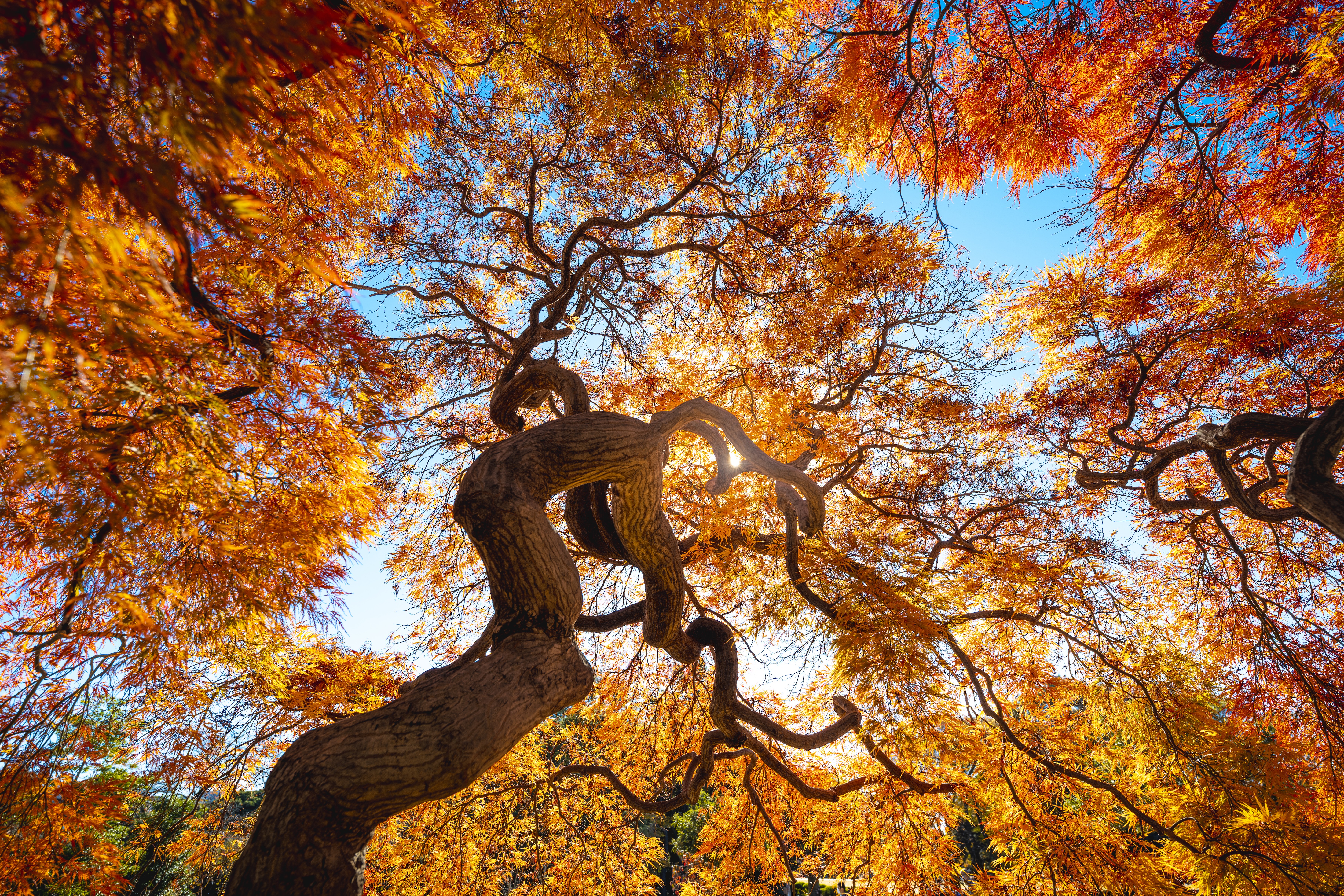 ‘The best time to plant a tree was 20 years ago; the second best time is now'
‘The best time to plant a tree was 20 years ago; the second best time is now'Now is the time to firstly, hug a tree, and secondly, plant some more — in increasingly imaginative ways.
-
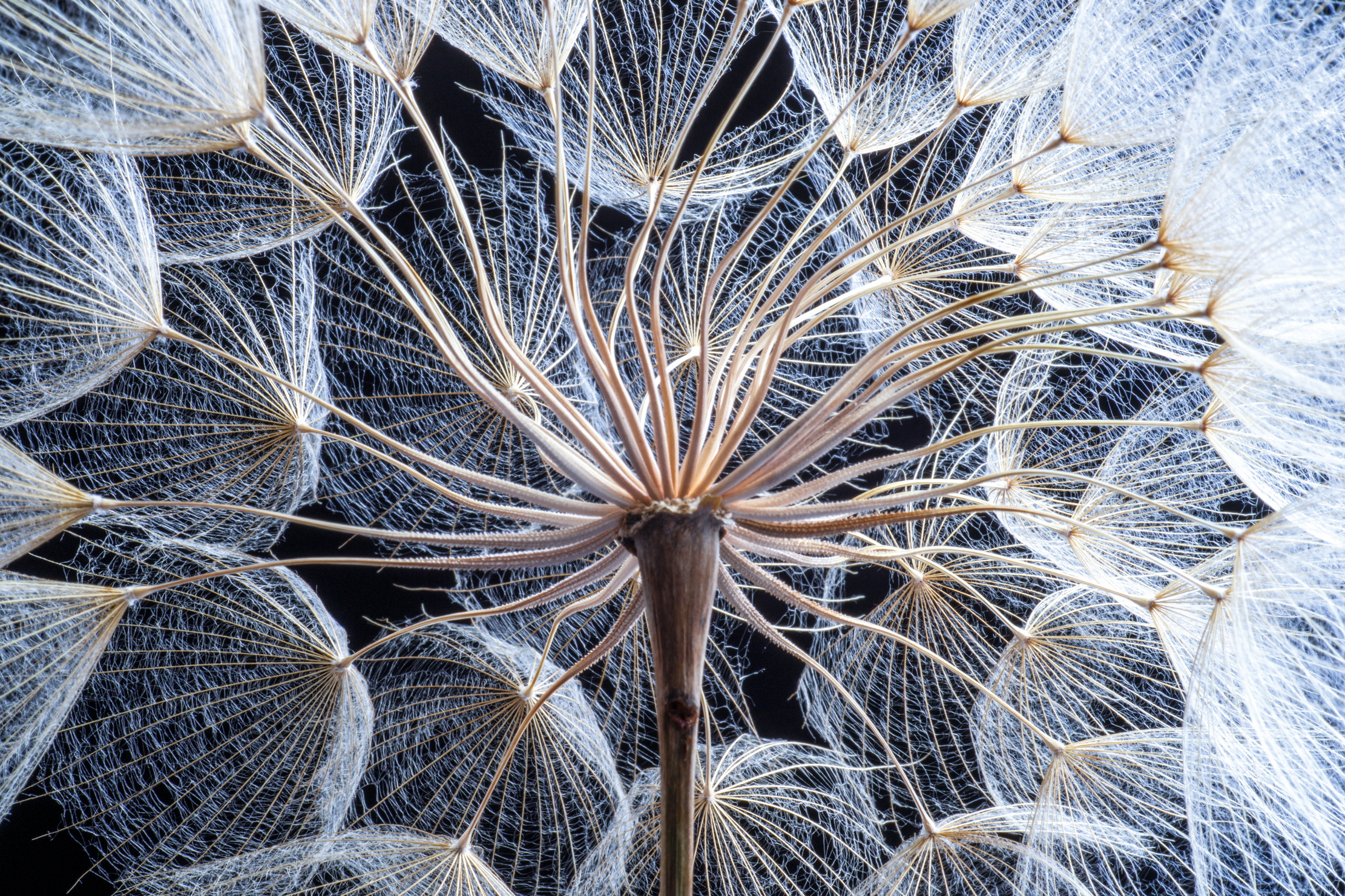 The secret life of seeds: The little wonders that sustain all life on Earth
The secret life of seeds: The little wonders that sustain all life on EarthThey might not be especially striking to look at — if you can see them at all — but seeds are among the natural world’s most awe-inspiring marvels.
-
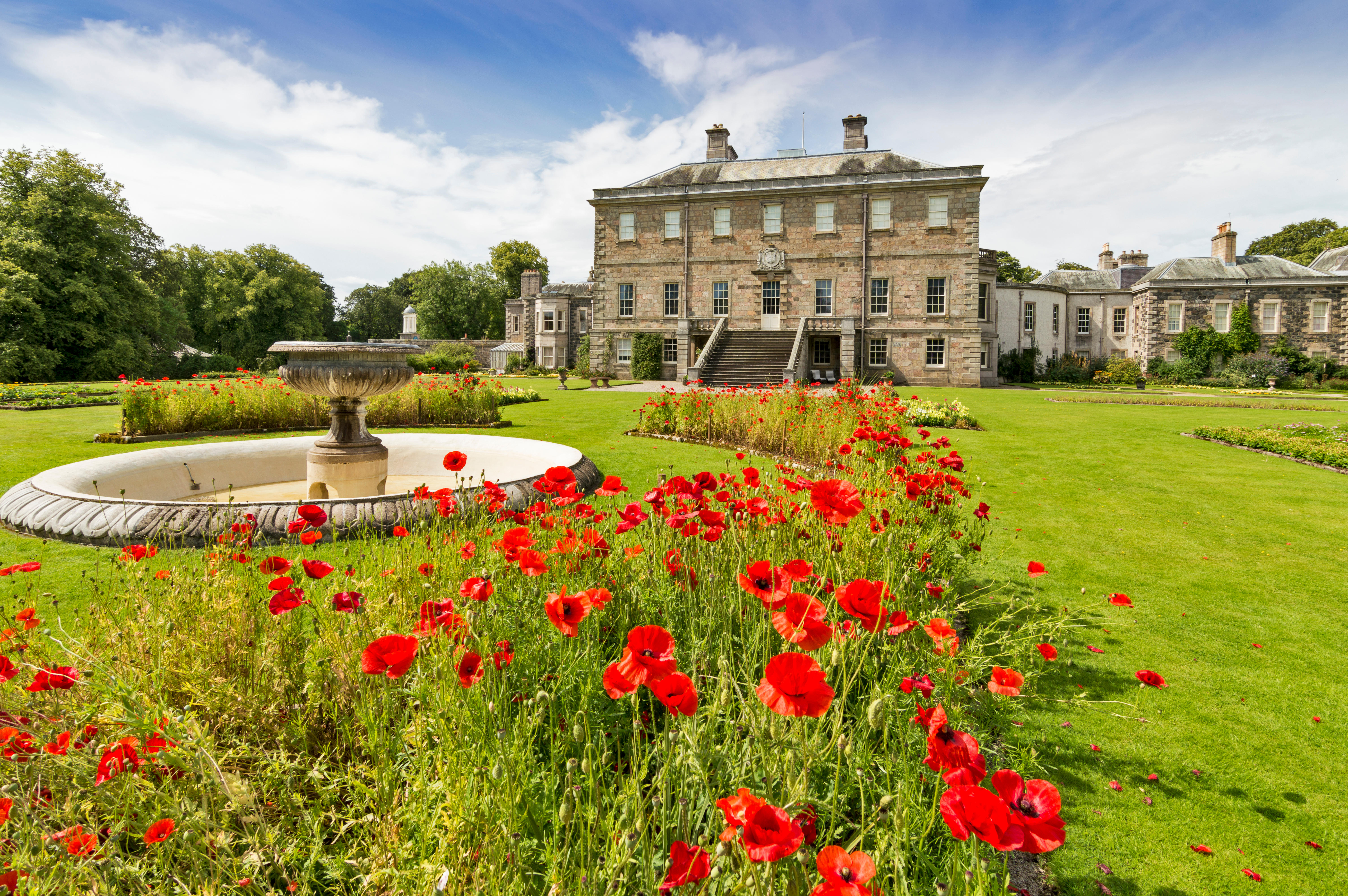 Do not be afraid of this bodysnatching fungi that lives on a lawn in Scotland
Do not be afraid of this bodysnatching fungi that lives on a lawn in ScotlandThe lawns at Haddo House in Aberdeenshire are luscious and friendly, unless you are the prey of the vile 'Strathy Strangler'.
-
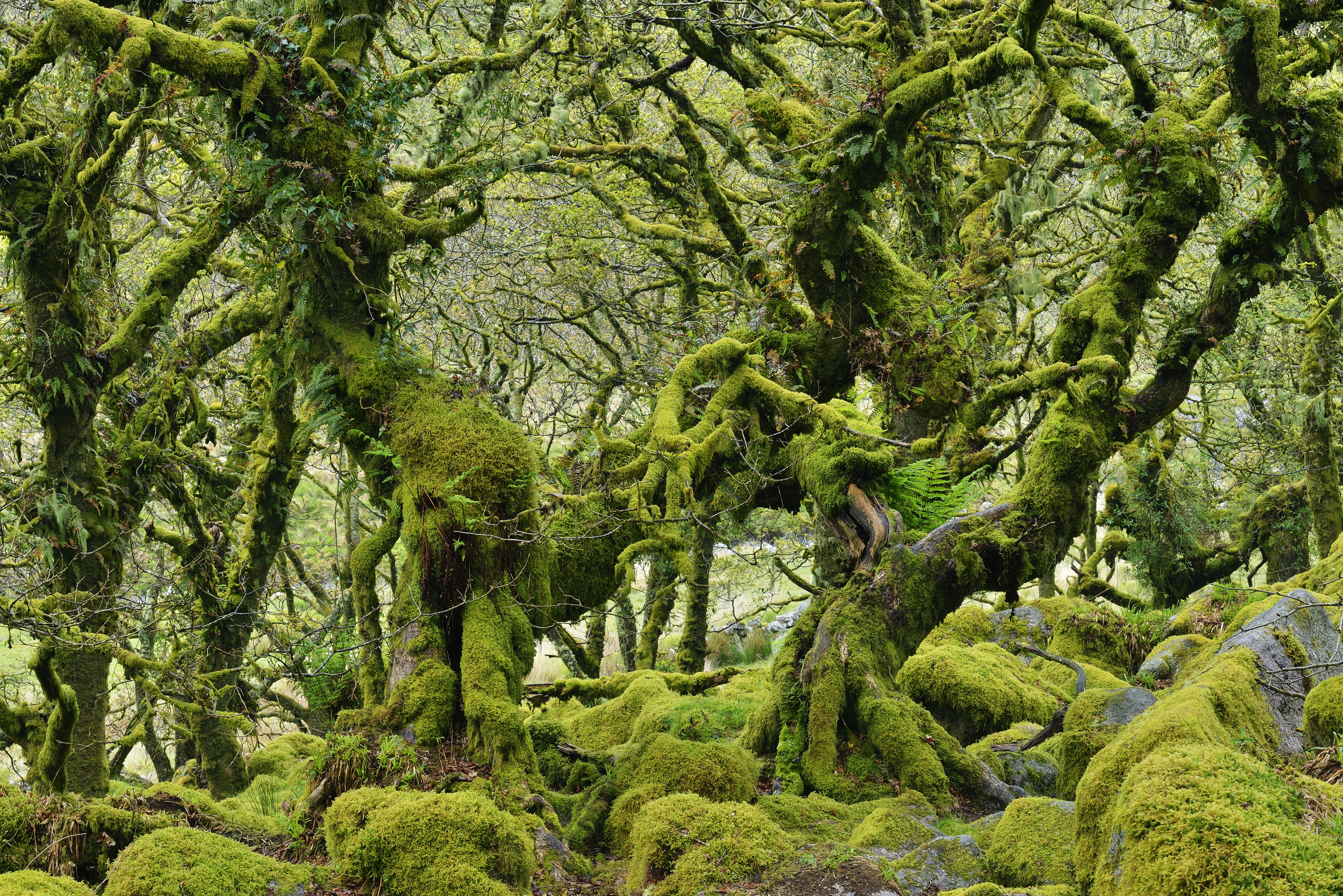 Temperate rainforests are being planted all over Britain — what are they and why do we need them?
Temperate rainforests are being planted all over Britain — what are they and why do we need them?Glen Auldyn on the Isle of Man is part of a £38 million restoration scheme to re-establish rainforests all over the world. Lotte Brundle went to see what's going on.
-
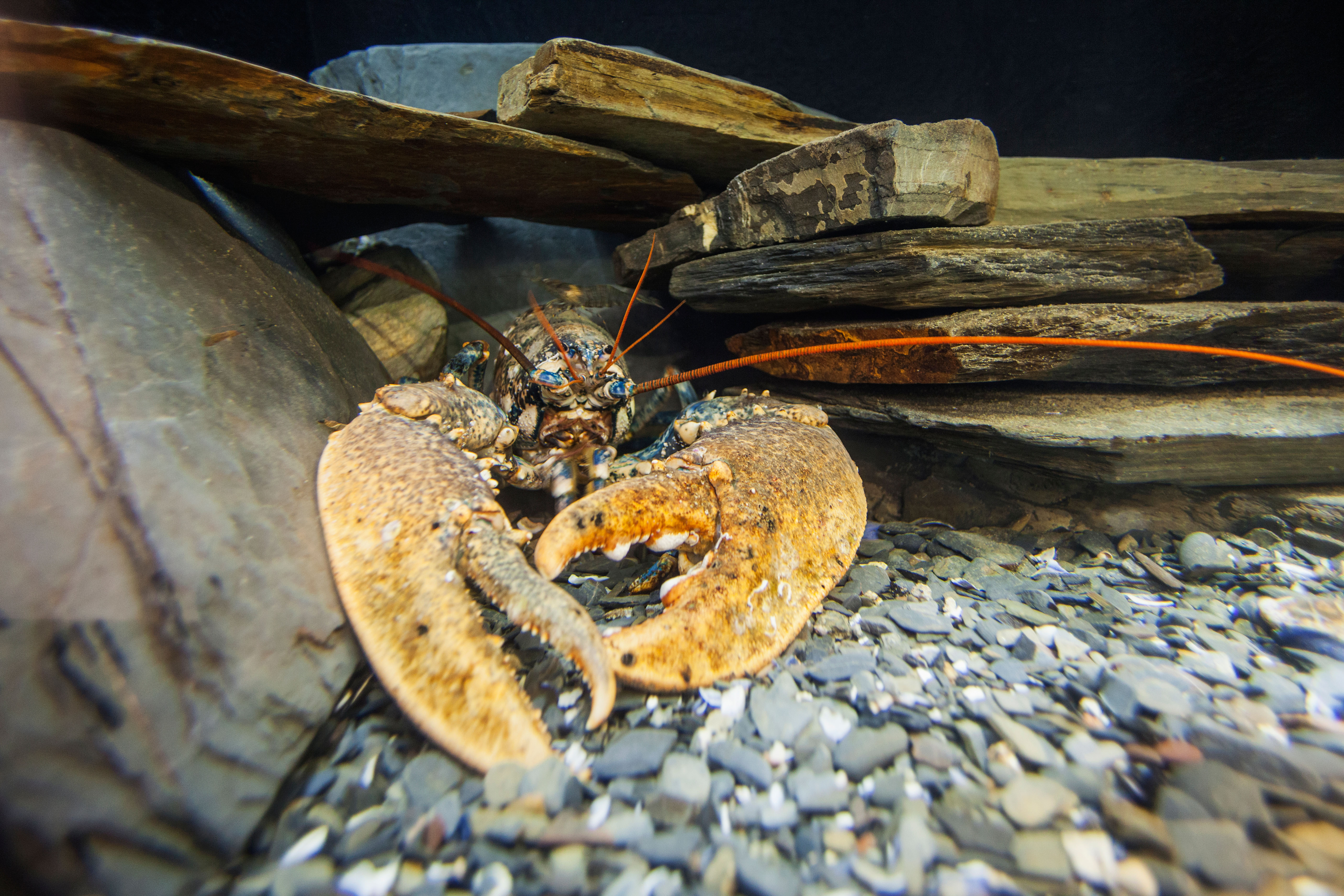 Claws for thought: The world leading crustacean conservation charity that is saving our lobsters
Claws for thought: The world leading crustacean conservation charity that is saving our lobstersThe National Lobster Hatchery in Cornwall is fighting for the species' survival. But it could do with some help.
-
 The Essex entrepreneur with big plans to eradicate microplastics from our oceans — and he's got the royal seal of approval
The Essex entrepreneur with big plans to eradicate microplastics from our oceans — and he's got the royal seal of approvalAdam Root plans to eradicate microplastics from our ocean for good.
-
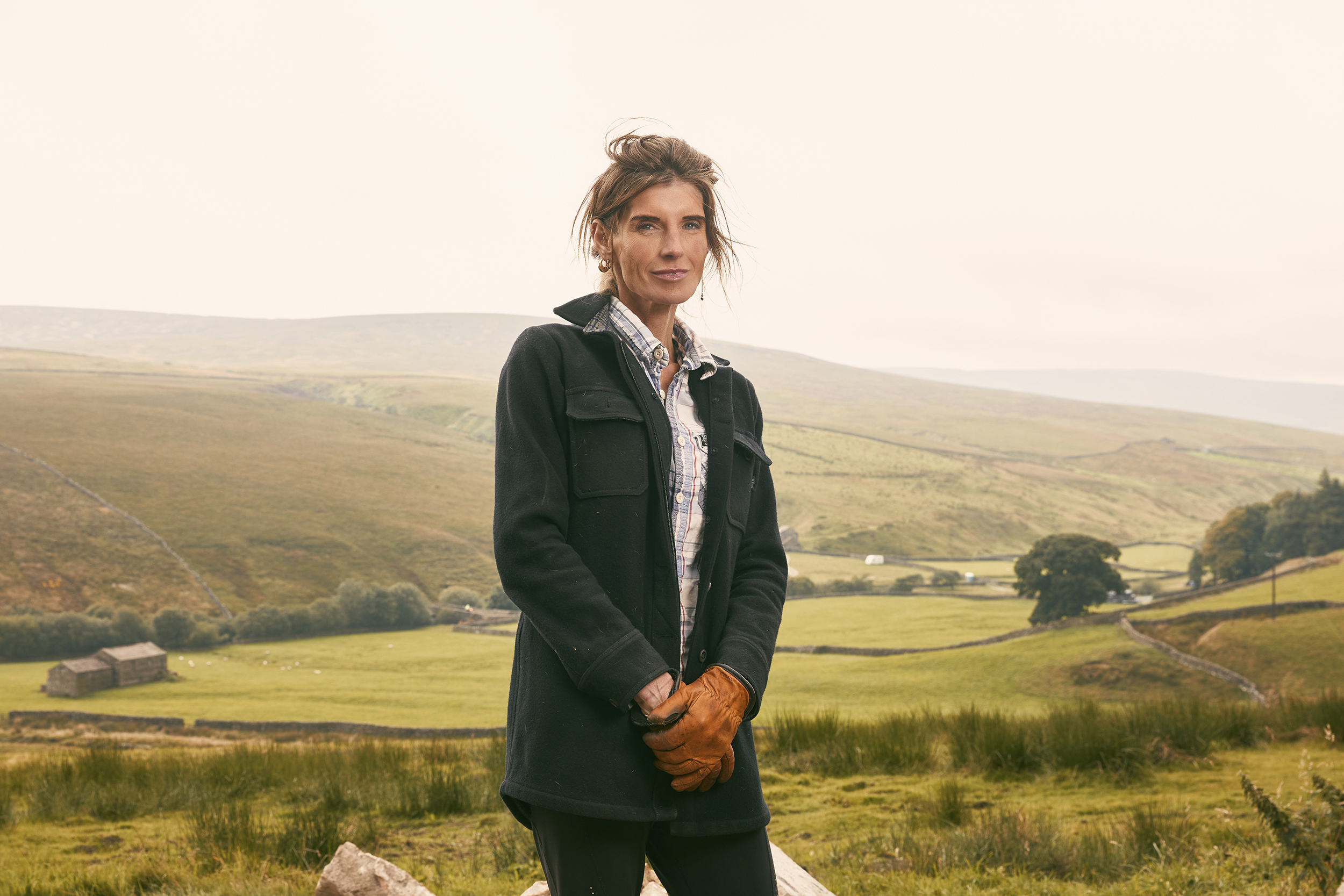 Amanda Owen: The Yorkshire Shepherdess on farming, life, and having tea with her sheep
Amanda Owen: The Yorkshire Shepherdess on farming, life, and having tea with her sheepLife can be beautiful for farmers, and often is — but it can also be hard and bleak. James Robinson joined the Country Life Podcast to talk about the extraordinary ups and downs of the job he loves, and how Nature helps out when things get tough.
